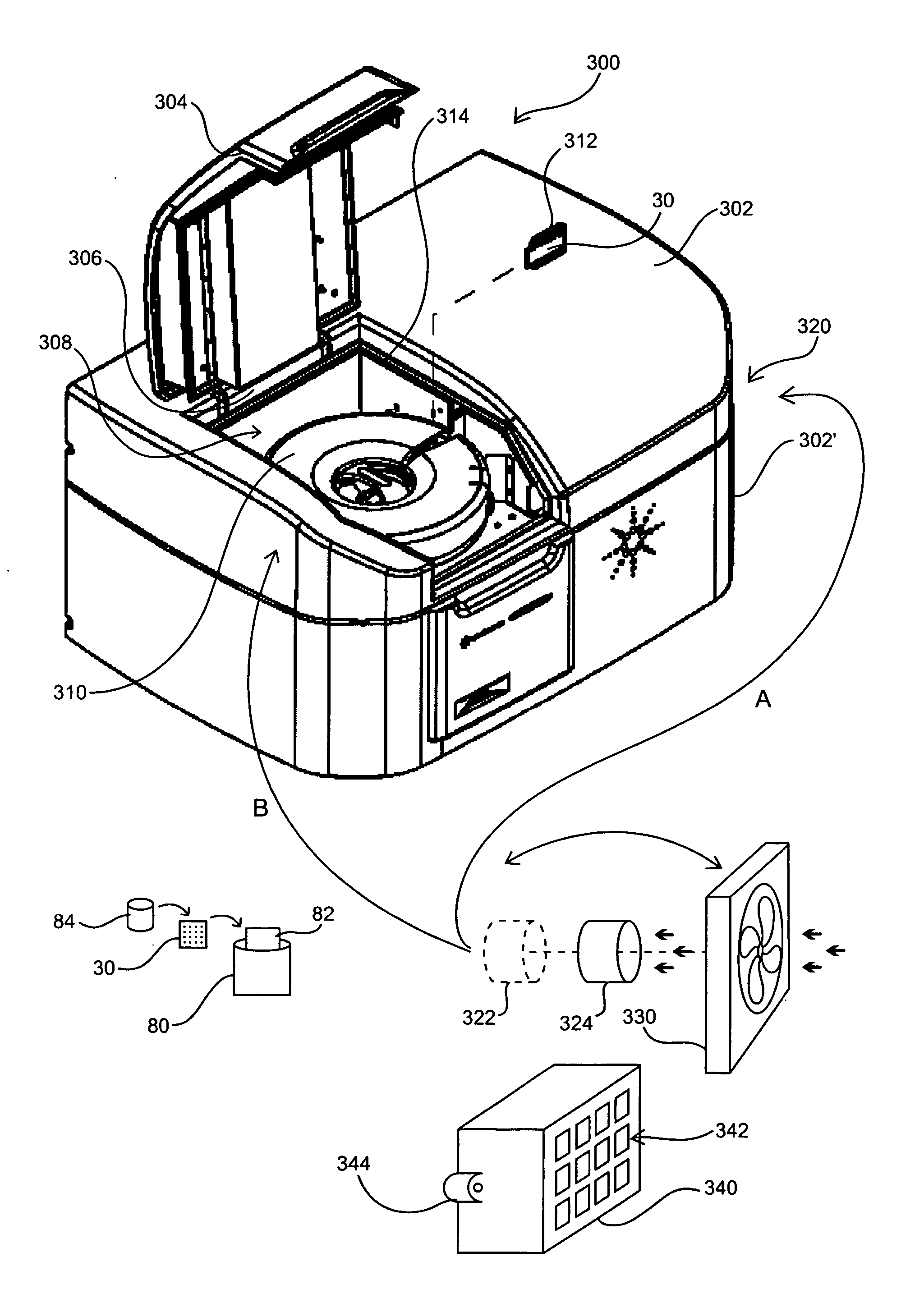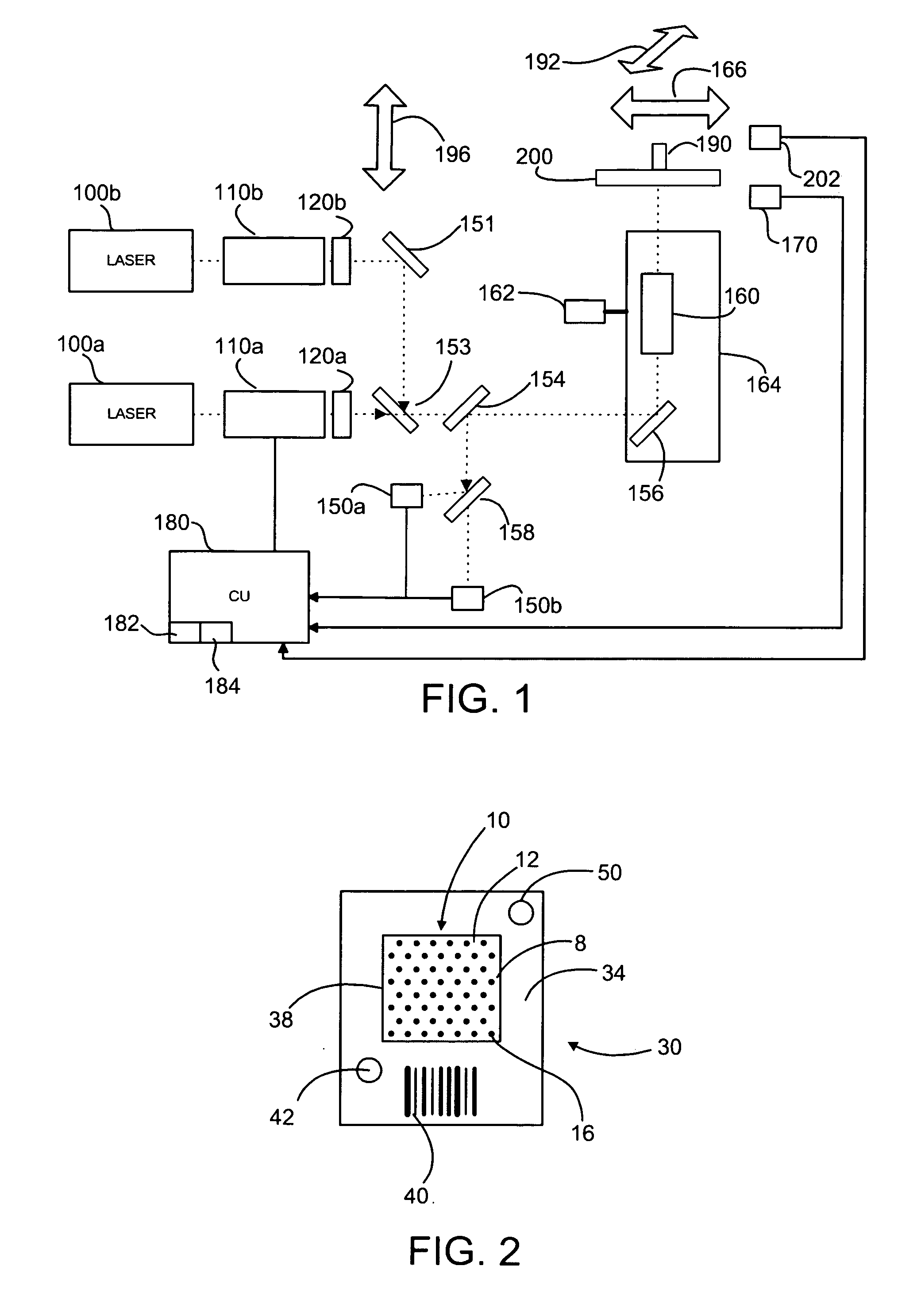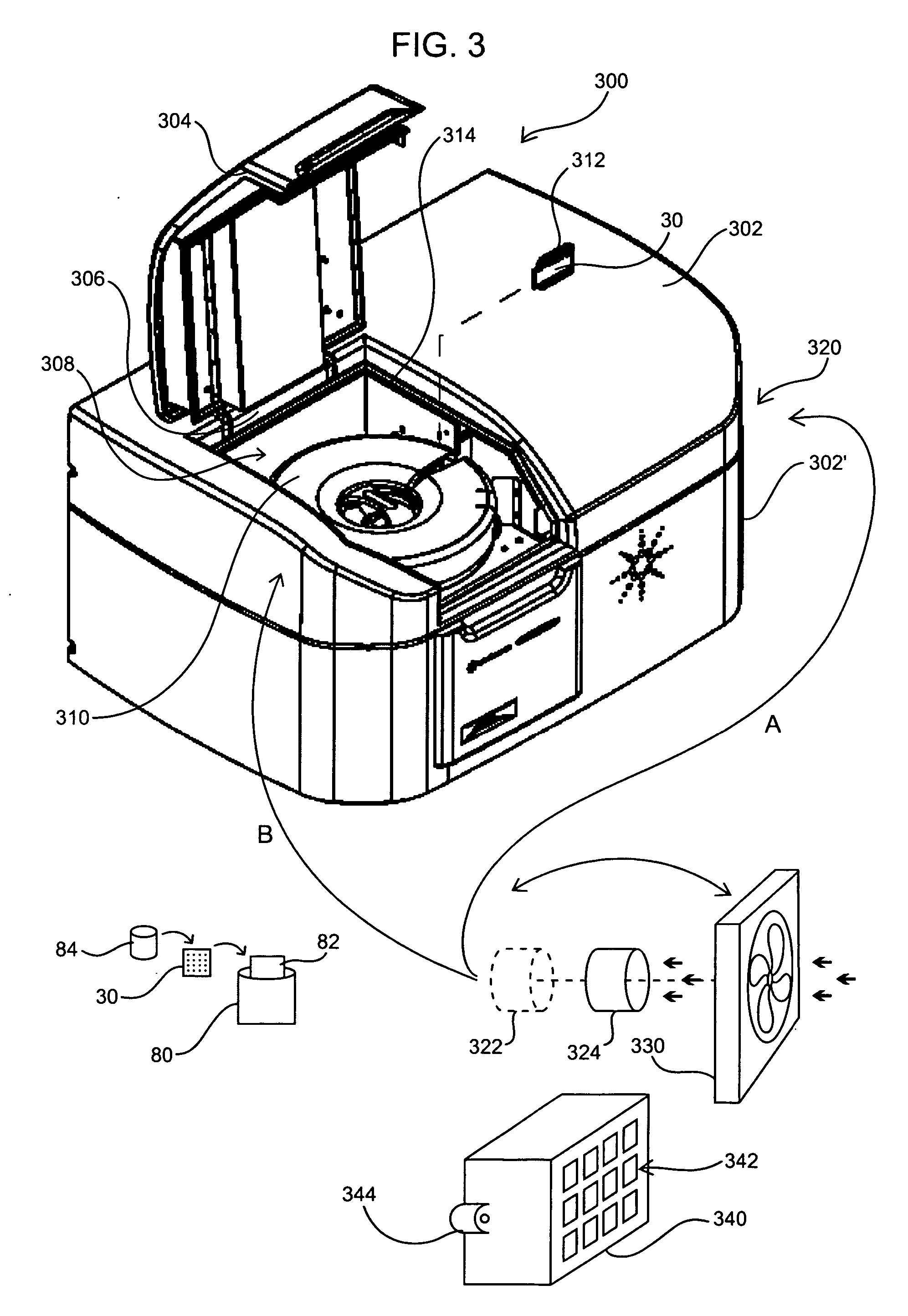Scanner with array anti-degradation features
a scanning array and anti-degradation technology, applied in the field of arrays, can solve problems such as signal loss
- Summary
- Abstract
- Description
- Claims
- Application Information
AI Technical Summary
Benefits of technology
Problems solved by technology
Method used
Image
Examples
Embodiment Construction
[0040] In describing the invention in greater detail than provided in the Summary and as informed by the Background and Definitions provided above, the pertinent functional aspects of the invention are first described. Next, exemplary components for actually scanning an array are described. This discussion is followed by a brief discussion of methods of using an array as will be protected during scanning by features of the invention. Then, a particular hardware implementation of the present invention is set forth. Finally, kits for use with arrays to be used in connection with scanners according to aspects of the present invention are presented.
[0041] Before describing these matters in such detail, however, it is to be understood that this invention is not limited to particular variations set forth and may, of course, vary. Various changes may be made to the invention described and equivalents may be substituted without departing from the true spirit and scope of the invention. In ...
PUM
 Login to View More
Login to View More Abstract
Description
Claims
Application Information
 Login to View More
Login to View More - R&D
- Intellectual Property
- Life Sciences
- Materials
- Tech Scout
- Unparalleled Data Quality
- Higher Quality Content
- 60% Fewer Hallucinations
Browse by: Latest US Patents, China's latest patents, Technical Efficacy Thesaurus, Application Domain, Technology Topic, Popular Technical Reports.
© 2025 PatSnap. All rights reserved.Legal|Privacy policy|Modern Slavery Act Transparency Statement|Sitemap|About US| Contact US: help@patsnap.com



